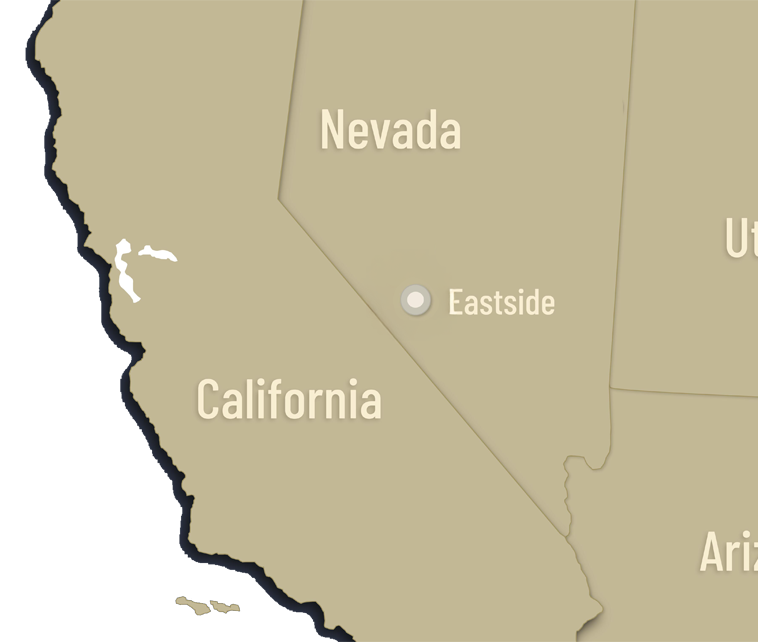Projet Eastside
Geology
In the Monte Cristo Range, including the area of the Eastside project, volcanic and associated volcanic sedimentary rocks of Cenozoic ages overlie Paleozoic marine chert, shale, siliceous argillite, siltstone, fine-grained quartzite, and lesser limestone. The Cenozoic rocks include (1) Oligocene and Miocene ash flow tuffs (24 to 26.7 Ma); (2) andesite flows, tuffs, dacite flows, and intrusive rocks of the Blair Junction sequence (15.7 to 22.2 Ma); (3) fresh-water lake sediments of the McLeans unit; (4) Gilbert Andesite (15 Ma) and (5) a series of rhyolite domes, associated rhyolite tuffs, and basaltic lava flows (7.2 Ma). Of particular importance are the 7.2 Ma high-level rhyolite domes, plugs and related pyroclastic deposits which host most of the gold and silver resources at the Eastside project.
At the Original Zone, two sub-parallel north-trending zones of gold and silver mineralization have been intersected with drilling, extending over 1km in a north-south direction, 700m east-west, and 500m vertically. Both zones are dominantly hosted in rhyolite. The deposit is open to the south, west and at depth.
Gold and silver mineralization at Eastside displays many classic low-sulfidation epithermal features. The low-grade gold domain is a halo of disseminated-like mineralization largely inside and to a lesser extent adjacent to the rhyolite as large irregular shapes mimicking the rhyolite geometry. The higher-grade zones are in part parallel to, and possibly controlled by high-angle and moderate-angle contacts between rhyolite and andesite in the east and west zones, respectively, and also likely related to contacts between successive intrusive phases of rhyolite. While internal successive-intrusive-phase related controls to mineralization are geologically reasonable, those shapes are in some cases somewhat speculative and geologically inferred. Silver mineralization is volumetrically smaller than the gold and lies mostly within the gold domains, but silver does not correlate with gold on a sample-by-sample basis.
Metallurgical Testing and Mineral Processing
Three preliminary metallurgical studies of mineralized material from the Eastside gold-silver deposit have been conducted starting in 2014. All the tests were cyanide-leach bottle-roll tests on RC drill cuttings conducted by Kappes, Cassiday and Associates, in Reno, Nevada. This metallurgical work is not sufficient to accurately predict mill and heap-leach recoveries of gold and silver at Eastside, but the test results are sufficient to conclude that Eastside mineralization is amenable to cyanide extraction. Heap leach extractions are expected to be around 70% and 20% for gold and silver, respectively, using a three-stage crushing procedure. Milling with a fine grind is expected to result in extractions over 90% and around 50% for gold and silver, respectively.

